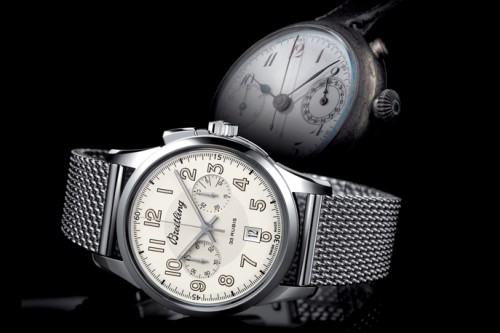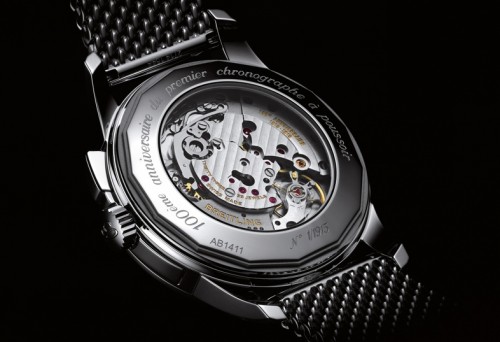Thu 22 Jan 2015
Enter the Breitling Transocean Chronograph 1915. Finally, a refreshingly different, yet quintessentially Breitling-styled watch from my favourite watch company. It captures all the retro charm of the era that saw the creation of the chronograph pushpiece, and captures it in a truly uniquely styled watch with an interesting dial design and mono-pusher version of the in-house Breitling chronograph movement dubbed the Caliber 14 (Which happens to be a designation that was used before, oddly – two caliber 14’s now?).
100th anniversary of a capital invention
One century ago, Breitling created the first independent chronograph pushpiece. To celebrate this milestone invention that was to change the face of the chronograph, the brand is introducing a limited series of its Transocean model, with an exclusive new Manufacture Breitling caliber and an unusual design reinterpreting the famous 1915 pushpiece.
Pocket chronographs had only one pushpiece, housed in the crown and successively handling the start, stop and zero-reset functions. In 1915, Breitling – a specialist in technical watches – was one of the very first brands to offer a wrist chronograph. But in relocating it from the waistcoat pocket to the wrist, the firm introduced an innovation that did not go unnoticed. The founder’s son, Gaston Breitling, came up with the ingenious idea of ensuring a clearer separation of functions by creating a pushpiece independent of the crown to control the three chronograph operations. Keen to ensure smooth, ergonomic handling, he chose to place the pushpiece at 2 o’clock, where the thumb or forefinger naturally rests, whether the watch is on the wrist or held in the palm of the hand. In 1923, Breitling perfected this system by separating the stop/start functions, governed by the pushpiece at 2 o’clock, from the crown-activated zero-resetting. This patented innovation would enable users to add up several successive times without needing to reset the hands to zero – whether timing a sports competition, a scientific process or a flight time. Finally, in 1934, Breitling took the final step in shaping the modern face of the chronograph by creating the second independent pushpiece exclusively intended for zero-resetting. This patented invention was soon adopted by all its competitors.
A monopusher chronograph with double column wheel
To celebrate this major milestone in its history, and the history of watchmaking, Breitling has created the Transocean Chronograph 1915. Far from contenting itself with a mere re-edition of the original model, the firm has chosen to reinterpret it from both technical and aesthetic angles. The steel case, designed in the pure style of the Transocean collection, features the famous pushpiece at 2 o’clock, but expressed in a redesigned, elongated and smoothly integrated form that further enhances its functionality. A concern for comfort and ergonomics that would doubtless have pleased Gaston Breitling. To ensure that this single pushpiece can successively handle the start, stop and zero-reset functions, the Breitling watchmakers and engineers have developed the new hand-wound Manufacture Breitling Caliber B14, officially chronometer-certified, equipped with a clever two-tiered double column-wheel system activated by chronograph controls also arranged on two levels.
A patent has been filed for this innovative construction. The twin-zone silvered dial with small seconds and 30-minute counter is adorned with large Arabic numerals and baton-type hands accentuated by a luminescent coating in an appealing patinated shade. A vintage touch reinforced by the historical Breitling signature and the steel mesh bracelet. A sapphire caseback enables one to admire the unusual construction of the monopusher chronograph movement, along with the “100e anniversaire 1915-2015” (100th anniversary 1915-2015) engraving. This model is issued in a limited series of 1,915. A collector’s piece for all chronograph lovers.






